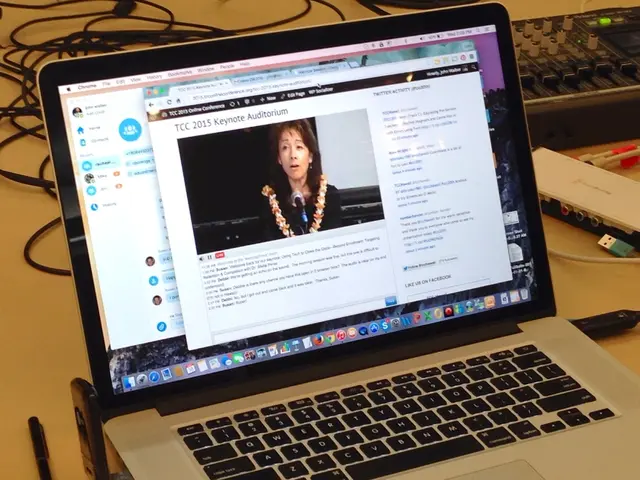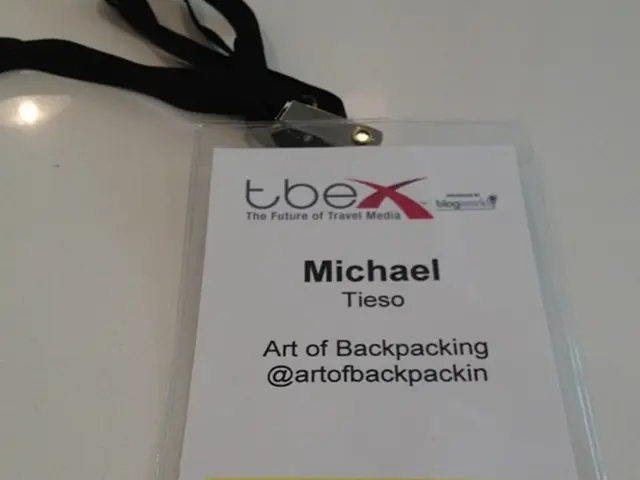Breaking News: The Electric Car Industry Faces a Potential Lithium Shortage by 2030
Electric car lithium supply may struggle to meet demand by 2030
hug Share on FB Tweet this Whatsapp it Email Print Copy Link
The world's reliance on lithium for batteries, particularly in the rapidly expanding electric vehicle (EV) sector, could hit a roadblock as soon as 2030. A recent study suggests that the supply of this essential battery raw material may not keep up with surging demand. Europe, in particular, may be compelled to import resources or switch to alternatives.
As the demand for electric cars surges, so does the need for lithium, a crucial component in lithium-ion batteries. Presently, Europe largely depends on imports to fulfill its demands, with major suppliers being Chile, Australia, and China.
Despite efforts to ramp up the EU's production of lithium, the study anticipates a significant shortfall in supply by 2030. Even though production is projected to reach 325,000 tonnes of lithium carbonate equivalent per year, it will barely scratch the surface of the expected demand - a staggering 792,000 tonnes.
"Lithium is as indispensable today as gasoline was during the industrial revolution," says Qifan Xia, co-author of the study from East China Normal University in Shanghai. "The challenges of meeting the growing demand are considerable. Without immediate action, we risk missing our climate and energy targets," Xia warns.
Europe Digging Deeper for Domestic Sources
Attempts to extract lithium domestically are underway in Germany. Some initiatives include:
- Investigating lithium extraction from deep water in the Upper Rhine Graben, with a pilot plant in Landau (Palatinate) recently becoming operational.
- Lithium extraction from deep water in the Lüneburg Heath was carried out as part of a trial in 2024.
- Plans to mine lithium directly from rock in the Saxon Ore Mountains.
Not Even the U.S. and China Can Meet Their Own Demand
Despite the anticipated setbacks, the U.S. and China also struggle to meet their own demands. The deficit in these regions is expected to be smaller than in Europe: U.S. production could reach up to 610,000 tonnes by 2030, providing coverage for around 90% of expected demand. China, already a substantial global supplier, could produce up to 1.1 million tonnes. However, this will still fall short of the expected demand of around 1.3 million tonnes.
Consequently, all three regions will need to be reliant on imports, a scenario that could intensify supply shortages and strain global trade relationships.
Could Sodium-ion Batteries Offer a Relief?
To ease the impending lithium shortage, the scientists propose not just increasing production but also reducing lithium usage. New battery technologies, such as sodium-ion batteries, which are already being used in China's first electric vehicles, could be game-changers. European manufacturers are also working on their application.
Although sodium-ion batteries possess lower energy density and can store less power than lithium-ion batteries, they offer significant benefits, particularly for short-range electric vehicles. With abundant sodium resources and a lower cost compared to lithium, sodium-ion batteries could prove to be a cost-effective alternative and potentially ease the strain on over-exploited lithium resources.
Key terms: electric vehicles, electromobility, battery cells, climate change, energy transition, China, Europe, commodity trading, studies, automotive industry
Enrichment data:
Sodium-ion batteries are indeed starting to break ground and could potentially help alleviate the anticipated lithium shortage for electric vehicles by 2030. Some notable advancements include:
Current State and Advancements
- Improved Technological Achievements: Companies such as CATL and Unigrid are aggressively working on the development and commercialization of sodium-ion batteries, focusing on heightening energy density and enhancing charging speed[1][2][4].
- Rapid Charging Capability: Researchers have made substantial strides in boosting the charging speed and durability of sodium-ion batteries. For instance, a team at the Jawaharlal Nehru Centre for Advanced Scientific Research created a sodium-ion battery capable of charging up to 80% in just six minutes, withstanding more than 3000 charge cycles[3].
- Cost and Material Advantages: Sodium is more abundant and less costly than lithium, making sodium-ion batteries a cost-effective alternative. This could potentially minimize the drain on lithium resources and contribute to a more resilient supply chain[1][3].
- Consortiums and Funding: Efforts like the Argonne National Laboratory's sodium-ion battery consortium highlight the growing investment in this technology. These initiatives are crucial to advancing sodium-ion batteries to a competitive level with lithium-ion batteries[3].
Challenges and Future Outlook
- Competitiveness: Despite advancements, sodium-ion batteries still lag behind some lithium-ion battery technologies, particularly lithium-iron-phosphate (LFP) batteries. Nevertheless, their competitiveness is improving, especially as lithium prices fluctuate[1][3].
- Market Readiness: Although significant progress has been made, more work is needed before sodium-ion batteries can fully replace lithium-ion batteries in mass-market electric vehicles. Researchers and industry leaders are focused on improving energy density and reducing material intensity to enhance competitiveness[3].
- Timeline: The next decade is critical for sodium-ion battery technology to achieve cost-viability and emerge as a mainstream solution. By 2030, these advancements could contribute to mitigating the lithium shortage and support the growth of electric vehicles globally[3].
To sum it up, sodium-ion batteries hold immense promise as a potential alternative to lithium-ion batteries. While more progress is needed, the next decade is crucial for advancing this technology and meeting the world's growing demand for greener, more sustainable energy solutions.
- The potential lithium shortage in the electric vehicle industry by 2030 has sparked interest in alternative battery technologies, such as sodium-ion batteries, which are being researched and developed by companies like CATL and Unigrid.
- The abundant and less costly sodium resources used in sodium-ion batteries could prove to be a cost-effective alternative to lithium-ion batteries, potentially reducing the strain on over-exploited lithium resources.
- Scientists argue that not only increasing production but also reducing lithium usage through the adoption of sodium-ion batteries could help alleviate the anticipated lithium shortage for electric vehicles by 2030.








